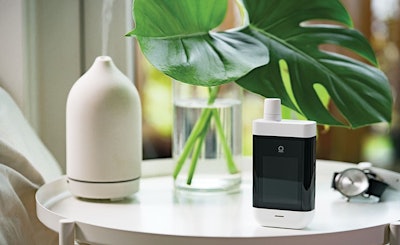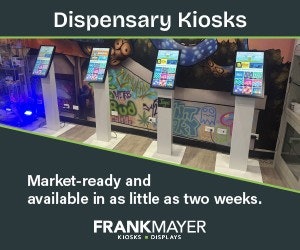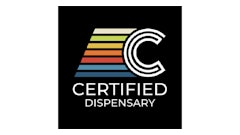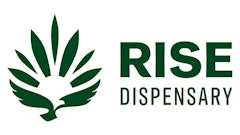
Low-dose THC products are trending in the adult-use cannabis market right now.
According to BDS Analytics, 16 percent of edibles consumers in Colorado preferred ediibles with 5 mg of THC or less in 2017. In Colorado, the data firm reports, “growth for these products hit 83 percent by the end of 2017.”
For medical patients, though, low-dose THC products may be a critical factor in ensuring health safety. The ability to experience new products slowly—granularly—allows patients to ease into a medical regimen.
As micro-dosing trends pick up in the U.S., Resolve Digital Health wants to capitalize on new technology and new consumer demand for the medical marketplace.

To that end, the company developed the Resolve ONE smart inhaler, which, Rutman says, deeply personalizes the patient experience with cannabis. (The inhaler will be available to medical patients in the third quarter of 2018.)
The Resolve ONE smart inhaler will use an app (within the product itself) to calibrate the proper dose for each patient. Upon getting the product ready for use for the first time, patients will answer several questions about their condition, their level of pain, their other medications.
The app will then suggest a dose from the Resolve ONE single-use cannabis pod, or cartridge, containing a strain specifically chosen for a particular condition.
After that first dose, the inhaler turns off. A few minutes later, the app will engage the patient and gather information about whether pain has subsided or, for instance, whether the patient feels “glued to the couch,” as Rutman says. “That level of personalization is really what we’re going after here.”
Going forward, each time the patient uses the inhaler the dose will be more refined by leveraging the user-provided data. What in some cases can be a disastrous first-time experience with medical cannabis is streamlined with the patient’s specific needs in mind.
“Microdosing or low-dosing: It still puts the onus on the patient or user to track what dose has been most effective,” Rutman says. “With this product, it does that work for you. … By adhering to the standards and protocols that we see in the pharmaceutical industry and applying them to cannabis, our hope is that it tears down some of the stigma.”
Resolve has been developing the product for three years, beginning in 2015. (“It all started with a single mom, a parent from my own community, who confided in me that cannabis was the only thing that got her through chemotherapy,” CEO Rob Adelson writes on the company’s website. "I couldn’t stop thinking about it – which led to my own research and a series of intensive development sprints over the course of the past three years.”)
Rutman says that the company is propelled by a desire to improve the medical patient experience. Pain and palliative care specialists have partnered with the company to fine-tune the medical components of this new product, lending a more finely tuned medical edge to information otherwise provided by retail employees.
“[The retail environment] was a pretty intimidating experience for a true medical patient to get into, in terms of finding the right strain and then figuring out how much [to] take,” he says. “It’s an experience that’s more designed for the recreational market, but then all of a sudden you inject this medical patient in there. … How do we make medical cannabis more medical?”
Products like this sit at the nexus of the recreational and medical cannabis worlds. As Resolve develops its technology and its data-gathering, end users in all adult-use capacities will reap benefits. (Users will opt into data-sharing, and Rutman says that Resolve will not share personal information.) Rutman says that Resolve’s work could play into the potential use of cannabis as an alternative to opioid prescriptions, for instance, benefiting other medical patients exponentially.
Resolve currently has partnerships in Canada, Florida, Washington and Oregon—with plans to expand to California, as well.
“What we feel is the information that we’re going to be gathering through this device not only will help the individual patient, but it’s also able to help other patients,” Rutman says. “What a device such as this provides is an opportunity to close that feedback loop and then use that data to inform a decision that [physicians] would make for the broader patient community."
Photos courtesy of Resolve Digital Health


























